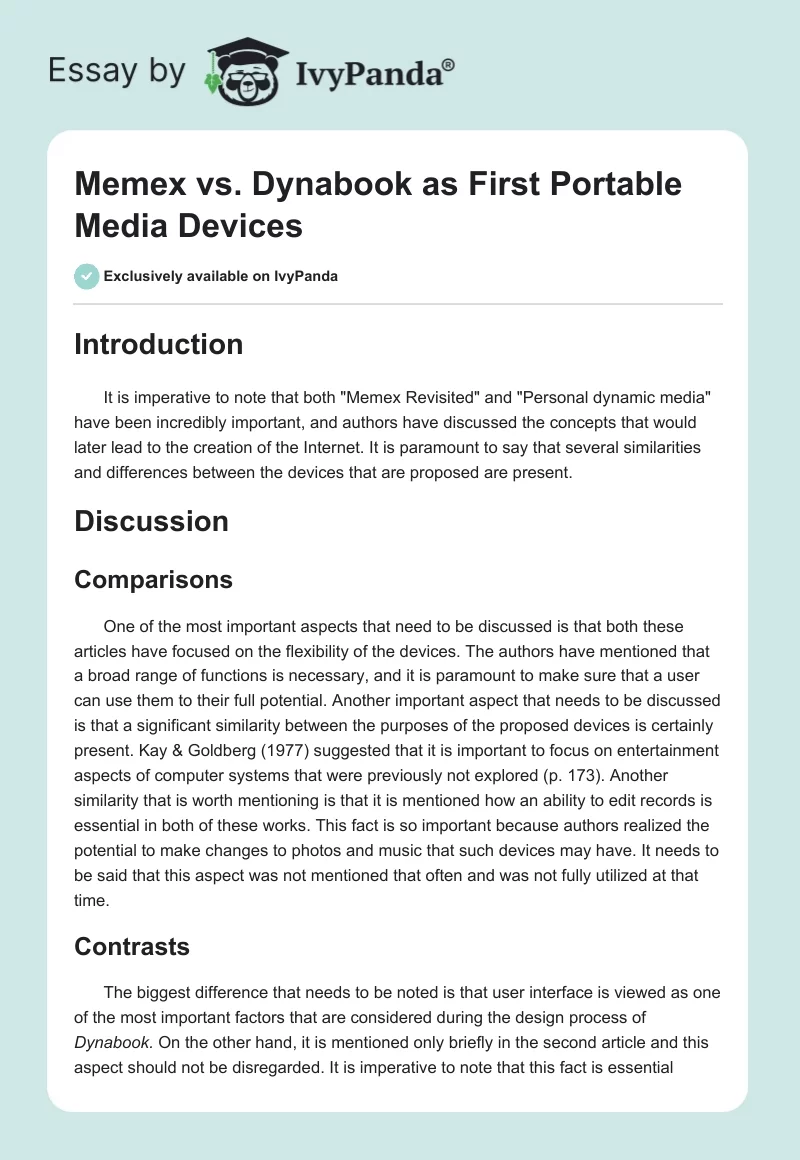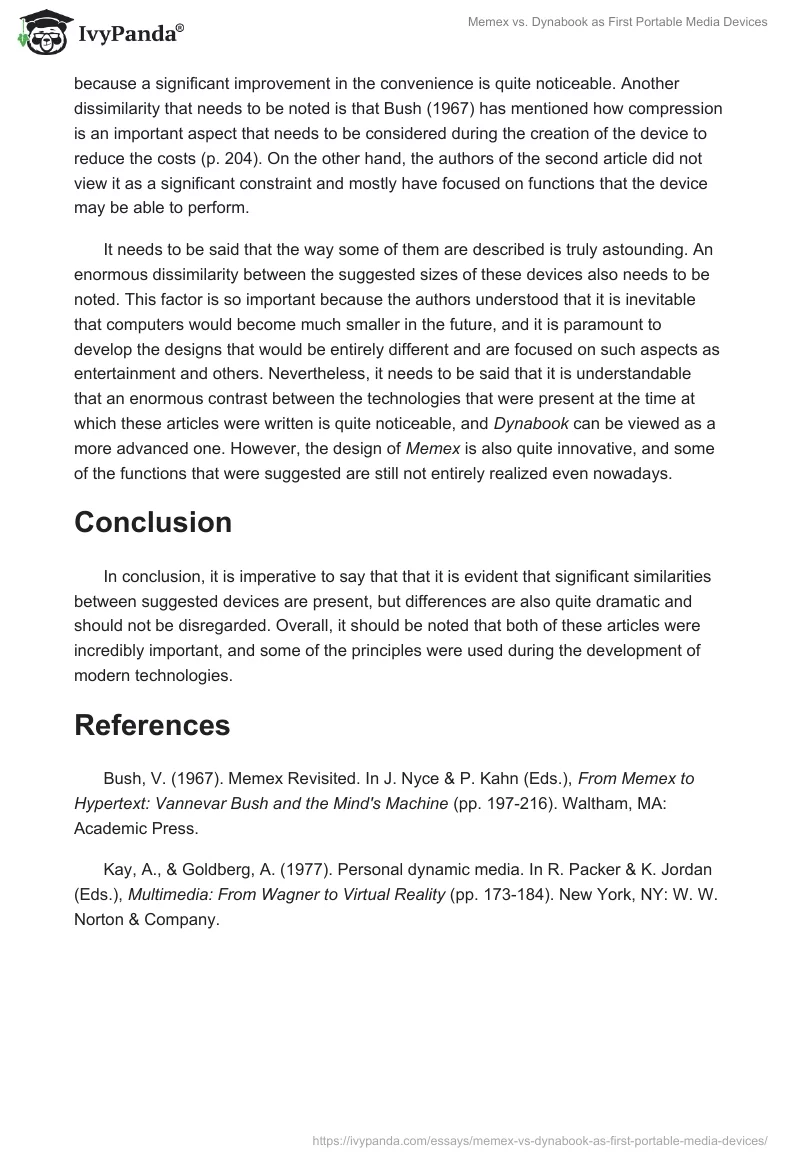Introduction
It is imperative to note that both “Memex Revisited” and “Personal dynamic media” have been incredibly important, and authors have discussed the concepts that would later lead to the creation of the Internet. It is paramount to say that several similarities and differences between the devices that are proposed are present.
Discussion
Comparisons
One of the most important aspects that need to be discussed is that both these articles have focused on the flexibility of the devices. The authors have mentioned that a broad range of functions is necessary, and it is paramount to make sure that a user can use them to their full potential. Another important aspect that needs to be discussed is that a significant similarity between the purposes of the proposed devices is certainly present. Kay & Goldberg (1977) suggested that it is important to focus on entertainment aspects of computer systems that were previously not explored (p. 173). Another similarity that is worth mentioning is that it is mentioned how an ability to edit records is essential in both of these works. This fact is so important because authors realized the potential to make changes to photos and music that such devices may have. It needs to be said that this aspect was not mentioned that often and was not fully utilized at that time.
Contrasts
The biggest difference that needs to be noted is that user interface is viewed as one of the most important factors that are considered during the design process of Dynabook. On the other hand, it is mentioned only briefly in the second article and this aspect should not be disregarded. It is imperative to note that this fact is essential because a significant improvement in the convenience is quite noticeable. Another dissimilarity that needs to be noted is that Bush (1967) has mentioned how compression is an important aspect that needs to be considered during the creation of the device to reduce the costs (p. 204). On the other hand, the authors of the second article did not view it as a significant constraint and mostly have focused on functions that the device may be able to perform.
It needs to be said that the way some of them are described is truly astounding. An enormous dissimilarity between the suggested sizes of these devices also needs to be noted. This factor is so important because the authors understood that it is inevitable that computers would become much smaller in the future, and it is paramount to develop the designs that would be entirely different and are focused on such aspects as entertainment and others. Nevertheless, it needs to be said that it is understandable that an enormous contrast between the technologies that were present at the time at which these articles were written is quite noticeable, and Dynabook can be viewed as a more advanced one. However, the design of Memex is also quite innovative, and some of the functions that were suggested are still not entirely realized even nowadays.
Conclusion
In conclusion, it is imperative to say that that it is evident that significant similarities between suggested devices are present, but differences are also quite dramatic and should not be disregarded. Overall, it should be noted that both of these articles were incredibly important, and some of the principles were used during the development of modern technologies.
References
Bush, V. (1967). Memex Revisited. In J. Nyce & P. Kahn (Eds.), From Memex to Hypertext: Vannevar Bush and the Mind’s Machine (pp. 197-216). Waltham, MA: Academic Press.
Kay, A., & Goldberg, A. (1977). Personal dynamic media. In R. Packer & K. Jordan (Eds.), Multimedia: From Wagner to Virtual Reality (pp. 173-184). New York, NY: W. W. Norton & Company.


